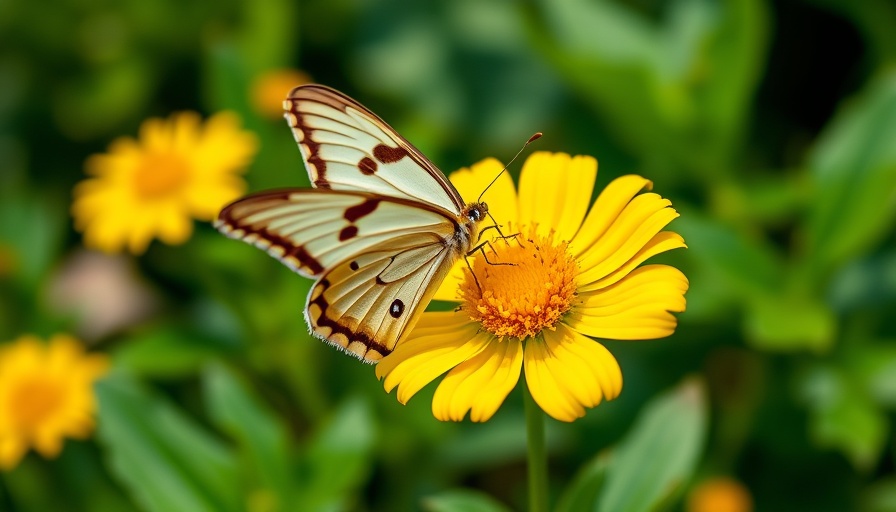
Transform Your Outdoor Space: Planting a Pollinator Garden
As we usher in Pollinator Week this June 16-22, it's time to reflect on the beautiful harmony between our gardens and essential pollinators. These vital creatures—bees, butterflies, and even less-known contributors like flies and beetles—are dwindling in number, attributed to habitat loss, pesticide use, and climate changes. However, creating a pollinator garden in your backyard can make a significant difference!
Why Planting Native Species Matters
When considering eco-friendly gardening, the importance of native plants cannot be overstated. Not only do they tend to thrive in their local climates with less water and care, but they also provide optimal nourishment for local pollinators. As avid environmentalists know, native plants adapt beautifully to local conditions, reducing the need for chemical fertilizers and resources, creating a sustainable home design that promotes biodiversity.
Creating a Vibrant Ecosystem
Designing a pollinator garden is straightforward: choose plants that are known to attract local pollinators. According to various studies, hardy non-natives like roses and daylilies also appeal to pollinators, creating a luscious display of color and movement in your garden. Here in Central Texas, gardens bloom with abundant variety, showcasing plants like Purple Coneflower and Gregg's Mistflower, which serve as nectar sources throughout the growing season.
The Lifecycle of Pollinators
A fascinating aspect of maintaining a pollinator garden is understanding the lifecycle of these creatures. While adult butterflies and bees are often seen enjoying flowers, the juvenile stages require specific host plants for nourishment. For instance, the Pipevine Swallowtail butterfly exclusively feeds on the Dutchman's Pipe plant. By incorporating host plants, you are not only attracting adult pollinators but nurturing their future generations, effectively cultivating a vibrant ecosystem.
Tips for Beginners: Practical Insights
For those hesitant to dive into gardening, starting a pollinator garden can be both approachable and rewarding. Begin small: designate a part of your yard or balcony to native flowers and herbs. Aim for a mixture of blooming times and plant types to ensure year-round sustenance for pollinators. Additionally, employing water conservation techniques, such as rainwater collection or drip irrigation, will enhance your garden's sustainability.
Hurdles to Overcome: Avoiding Pesticides
One of the most critical components of eco-friendly gardening is avoiding pesticides. It might be tempting to treat nuisances like caterpillars, but remember, they are future butterflies! Emphasizing natural pest management solutions, like introducing beneficial insects or companion planting, will preserve your pollinators and promote a toxin-free home. Taking this step not only protects your plants, but reinforces a zero-waste lifestyle.
Your Role in Conservation
As a conscientious homeowner, your small choices can effect significant change. Every garden can become a sanctuary for pollinators, fostering a connection between nature and human habitation. By providing these essential creatures with a nourishing environment, you contribute toward a sustainable future.
Get Started Today!
This week, challenge yourself! Dedicate some time to researching and planting native species that host and feed local pollinators. Consider collaborating with your neighbors to create a community pollinator garden. Together, you can foster an outdoor space that thrives in beauty and biodiversity while taking significant steps toward sustainability in your home.
Taking part in initiatives like Pollinator Week isn’t just about celebrating; it's about action. Join the movement towards sustainable home design and energy efficiency. Get involved in workshops, plant giveaways, and local eco-gardening events in your area. Your efforts today will contribute immensely to conserving crucial pollinators for future generations.
 Add Row
Add Row  Add
Add 




Write A Comment